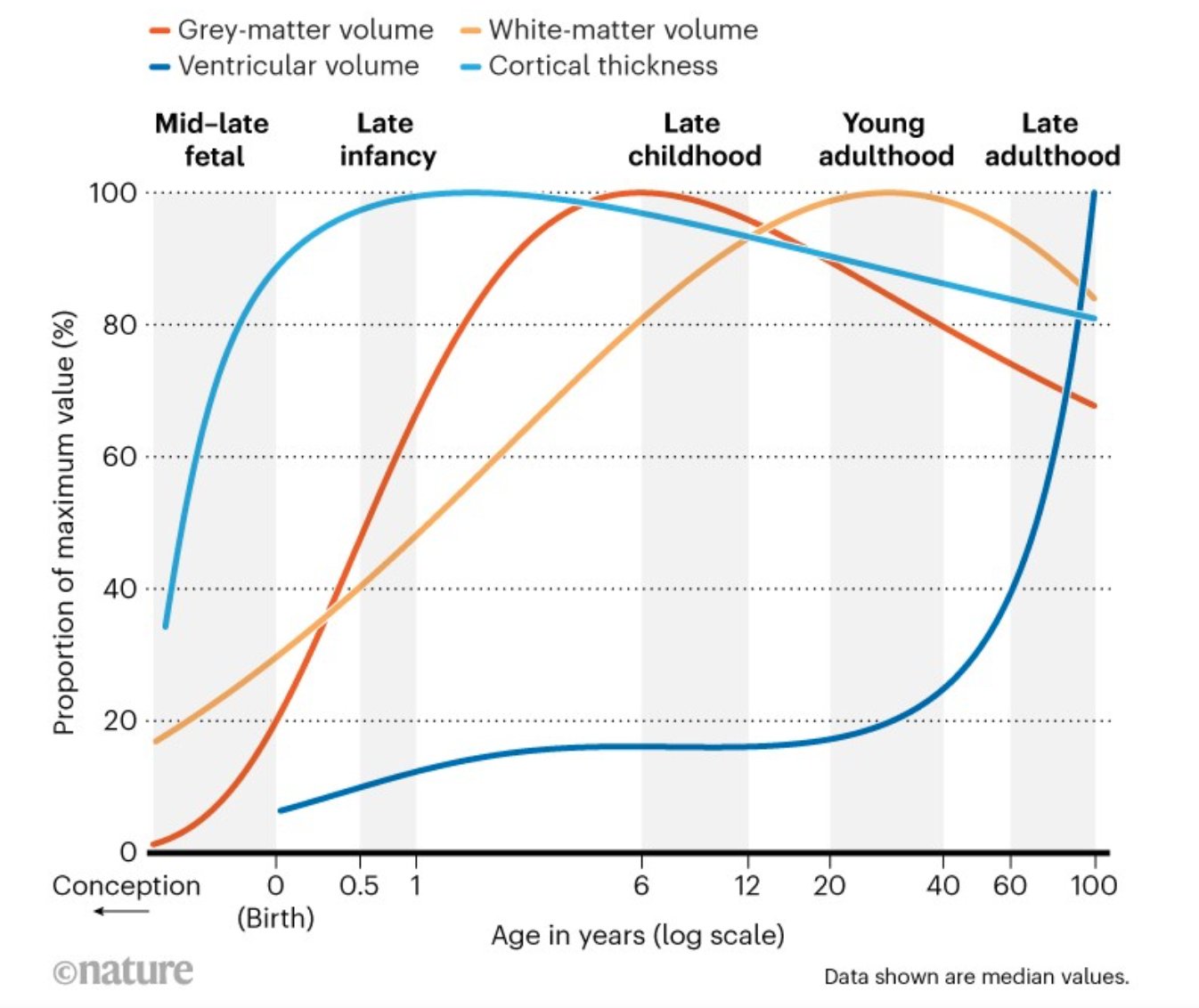101 Facts About Ageing #62: Brain Structure From Foetus To Centinarian
Posted on 12 April 2022

|
Getting your Trinity Audio player ready...
|
As Daniel Patrick Moynihan, an American sociologist, politician, and diplomat once said: “Everyone is entitled to his own opinion, but not his own facts”. And we wholeheartedly agree. A shared set of facts is the first step to building a better world with longevity for all. In that spirit, we are creating a series that covers 101 indisputable facts about ageing, health and longevity.
- Grey matter volume and cortical thickness peak relatively early in development, and decline at an accelerating pace thereafter
- White matter volume peaks in young adulthood and declines at an accelerating pace thereafter
- Ventricular volume increases slightly in early life, and undergoes a very rapid increase throughout adulthood
The structure of the brain changes constantly throughout life. During early development, all components of the brain increase in size as the brain grows. The thickness of the cortex, the outer layer of the brain associated with ‘higher’ functions like consciousness, emotion, reasoning, language, and memory, usually peaks somewhere between the ages of 1 and 6. The grey matter, which contains most of the brain’s neuronal cell bodies (the part of the neuron containing the DNA) and from which the cortex is composed, reaches its peak volume around the age of 6. The volume of the white matter, which is composed mostly of fast-conducting nerve fibres and serves to relay information between different brain regions, usually peaks in volume between ages 20 and 40.

Source
After reaching their peak volume, the above regions of the brain decrease in volume at an accelerating pace throughout the rest of life. The only brain region that consistently grows in volume is the ventricular system, which is composed of four cavities in which cerebrospinal fluid circulates. These cavities grow alongside the brain in early childhood, then remain stable until adulthood, after which they grow at an increasing pace. Though the ventricles perform an important function, their expansion during adulthood is not a good thing – it is the result of other important brain structures shrinking. As bleak as that may sound, it’s worth remembering that size is not the only determinant of brain function.
References
Brain charts for the human lifespan: https://doi.org/10.1038/s41586-022-04554-y
Copyright © Gowing Life Limited, 2024 • All rights reserved • Registered in England & Wales No. 11774353 • Registered office: Ivy Business Centre, Crown Street, Manchester, M35 9BG.

